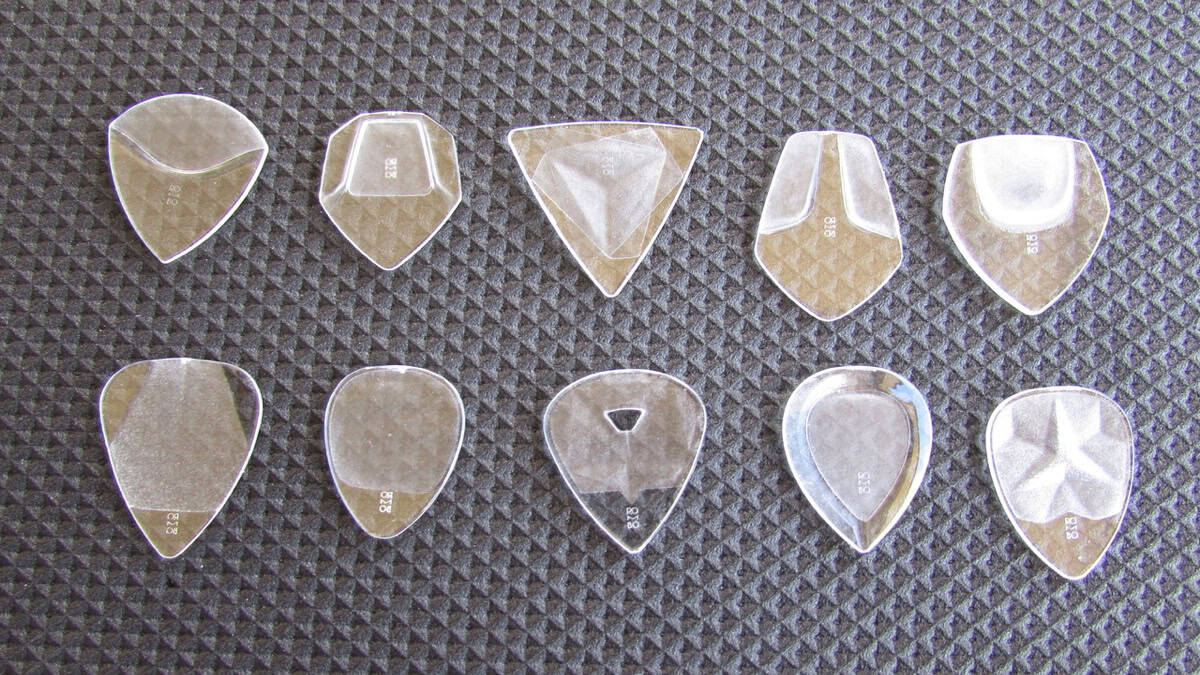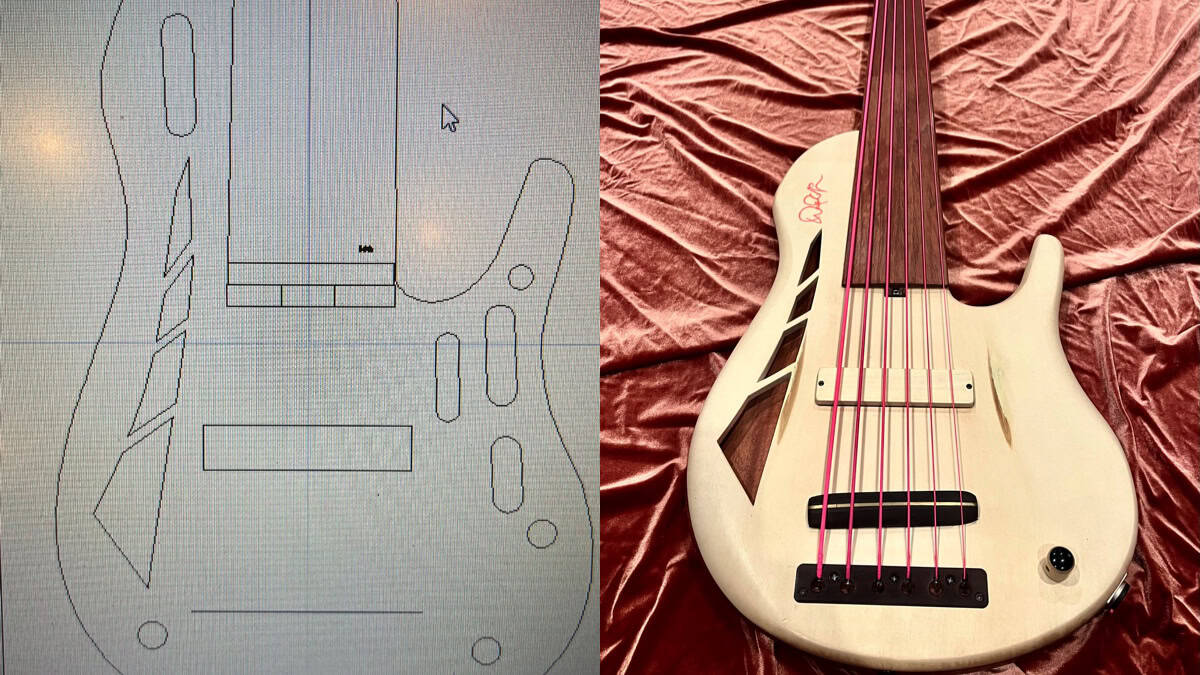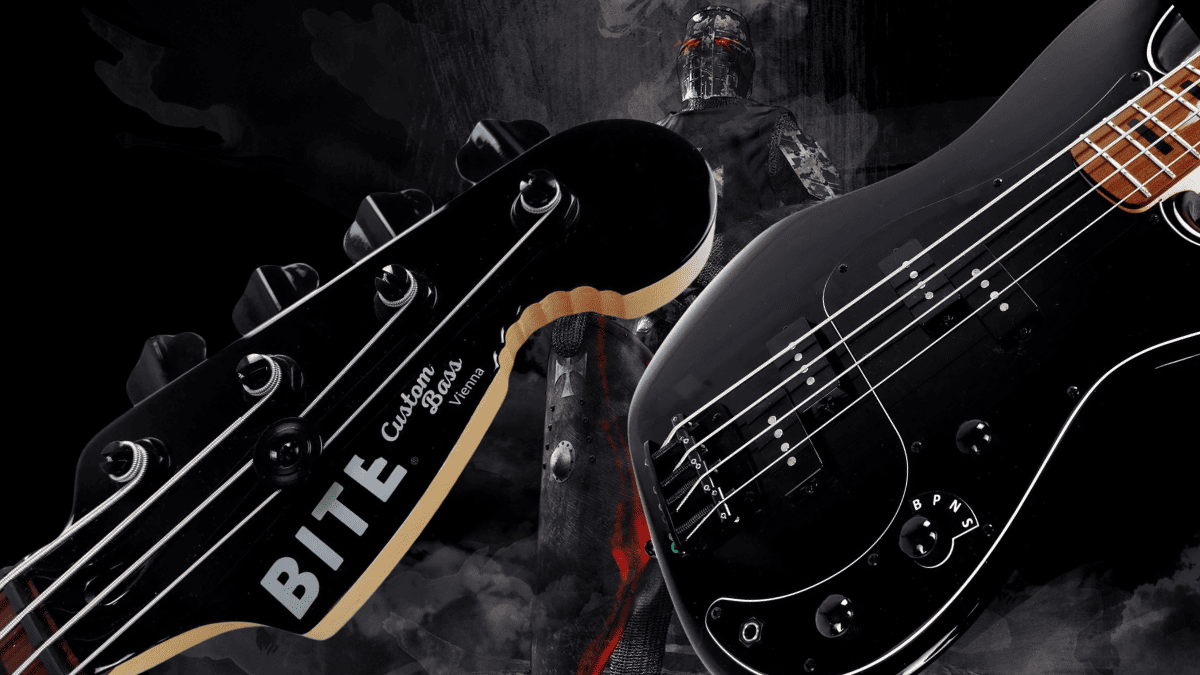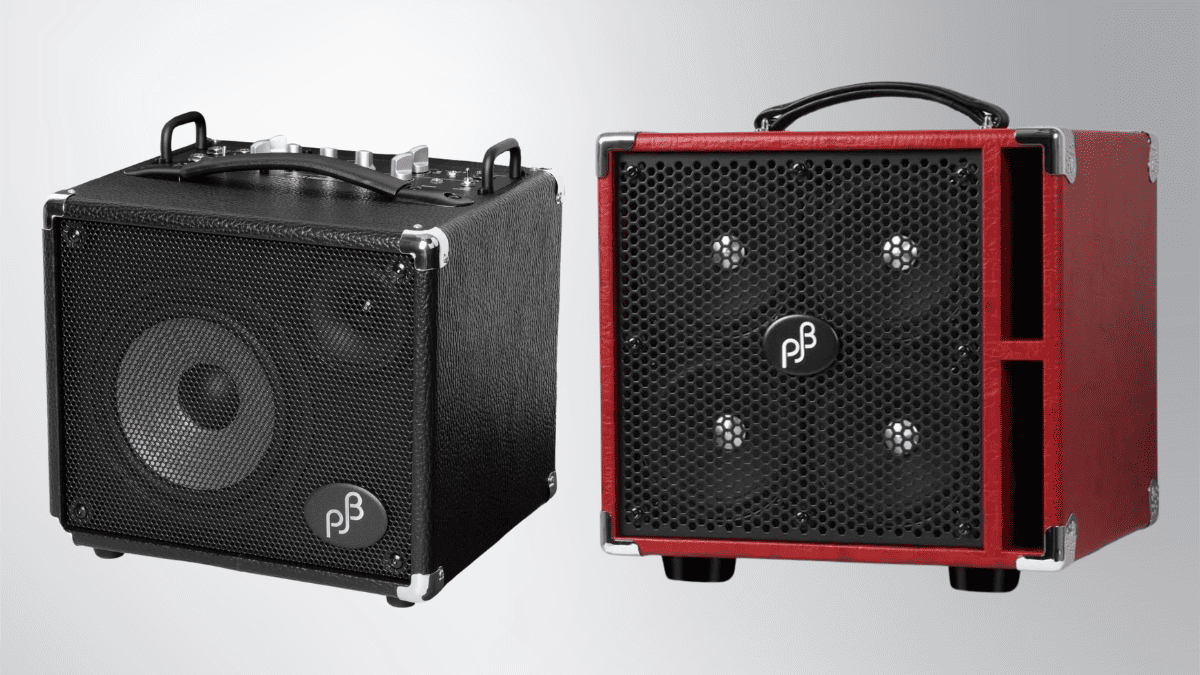Gear Reviews
Sonic Farm Tantra 2500w Bass Amplifier Review

Review of the Sonic Farm Tantra 2500w Bass Amplifier
Have you ever wondered what would happen if a highly respected pro audio company designed and built a bass amp from the ground up? Have I got an answer for you. The Sonic Farm Tantra is the brainchild of pro audio sorcerers and childhood friends Zoran Todorovic and Boris Drazic, who have been designing and building professional audio equipment together for more than 30 years.
In the engineering and mastering community, Sonic Farm is held in the highest regard for the build quality and incredible fidelity of the equipment they make. Their award-winning gear can be found in the hands of the finest and most demanding audio engineers on the planet.
I first learned about Sonic Farm when my friend and bass amplification big kahuna Mike Arnopol (of Michael Arnopol Soundworks) hipped me to their 2Di4 Tube Direct Box, which I reviewed for Bass Musician Mag a handful of years ago, and have been using faithfully and without fail ever since. The 2Di4 is my go-to DI/preamp for stage and studio and it always sounds exceptional, regularly acquiring praise from engineers and FOH soundpersons for its wonderful tone.
In that review I gushed over the 2Di4, remarking how “without a trace of brashness or harshness, it was effortlessly present, warm and articulate”. I remember thinking, man if these guys ever design a full-blown amp for bass, its gonna kill. Well folks, here it is. Designed in conjunction with Mike Arnopol himself, initially, the Tantra was sold as a preamp, then as an integrated head with a 1000w Pascal Class D amp module. This newest version includes an option for a 2500w Pascal Module and boy does it deliver the goods.
Upon first glance, the Tantra is a LOT to take in and is quick to catch people’s eyes with its bright red chassis and cream-colored knobs.
When asked about it, I like to joke that it was ‘pulled from a space shuttle cockpit’. Its front panel is loaded with more features and controls than most of us are used to seeing in a bass amplifier, and even as someone who thinks of themselves as fairly technologically savvy, I initially found it quite complicated. The good news is that despite its somewhat overwhelming layout, most of its features and options are defeatable and can be bypassed, making the Tantra a very simple and straightforward bass amp.
The audio purist in you wants just a Gain control and Master Volume? Done. Need to add a little compression? You got it. Maybe a little bass boost? Sure thing. Playing in a funky sounding room that needs some surgical parametric EQ maneuvers? Say no more. You can actually make this amp as simple or intricate as you want or need it to be.
The Tantra includes much of the 2Di4’s feature set up front, with a gain knob, switches for Hi and Lo boost and its wonderfully useful Pentode/Triode tube mode switch.

The Hi and Lo boost have trim pots on the front panel to control the amount of low or hi boost they provide, and the Tube Mode switch chooses between Triode (less gain and cleaner, more polite sound) and Pentode (more gain and subtle saturation) tube operation from the amps EF-86 preamp tube. I mainly found myself using the more full-throated Pentode mode, however, on my 2Di4 I have found a number of uses for both Pentode and Triode mode, depending on the bass, the rig and the band. At the top left, you’ll notice the H2 and H4 knobs. These are the Tantra’s “Harmonic Generators”.
The H2 and H4 controls are particularly unique and interesting, adding in 2nd and 4th harmonics to your sound. In a nutshell, the H2 knob adds in some subtle low mid growl, and the H4 knob imparts some mid/upper mid push to your sound. Neither are earth-shatteringly potent, but they do shift the overall voicing of the amp in some very neat ways, and I found myself putting a little of either or both on my sound from time to time to make things cut through or pocket in the right ways.
The Tantra’s exceptional 1-knob compressor delivers very smooth compression, is great at fattening up your sound, and adding presence while gently reigning in the transient peaks. I never heard it pumping/breathing and found a great ‘always on’ setting at around 30-40%. Sonic Farm notes that the compressor has a ‘fixed compression threshold’, so it’s important to drive the input gain to an optimal level in order to get the best results with the compressor. I agree, as lower input gain settings resulted in a noticeable noise floor increase with the compressor engaged, but with the gain knob set just below where the input was clipping, the comp was dead quiet and functioned beautifully.
The Tantra’s EQ section really shines and deserves an honorable mention. In addition to Bass and Treble shelving style controls, the Tantra offers a lovely fully parametric 3 band EQ, allowing you to surgically carve up your tone. I was impressed by how powerful and accurate the parametric EQ was, and that it introduced hardly any noise when boosted.
One of the Tantra’s more interesting features is its Overdrive circuit.
This one gets a little complicated with its numerous controls, however, the OD Gain and Blend controls allow you to blend in a variable amount of overdrive with your clean signal. A 3 position OD high pass filter switch delivers 3 distinctly different overdrive profiles with different amounts of high and low-frequency content, allowing you to further tailor the grit to your liking.
One feature that’s not new to pro audio gear, but is relatively new to bass amps is the Tantra’s Variable High Pass Filter (HPF).
It has 3 fixed frequency points, beneath which it sharply attenuates signal, cutting subsonic boom and helping to curb speaker excursion. Users can choose between 28, 40 and 60 Hz via the 3-way switch, or defeat the HPF altogether. I have found that an HPF is a crucial ingredient in solid, fat bass tone, and the Tantra’s works great. I mostly set it at 28 Hz, but occasionally used the higher settings in boomier environments and it helped tighten up the low end and reduce the rumbly thunder that can sometimes occur in those rooms.
The rear panel of the Tantra is pretty feature-rich as well, with separate power switches for the amps preamp and power amp section, dual Speakon connectors, a ¼” effect loop, XLR power amp input jack, and dual XLR outputs for DI out (mic level, transformer balanced), and line out (line level), as well as a dedicated tuner output and a footswitch jack (1/4”) for toggling the amps overdrive circuit.

I had a real blast testing this amp, and can say with conviction that every feature and option on the Tantra is very well thought out, supremely executed and musical in nature.
With its studio-quality tube preamp/DI, exceptional EQ section, onboard compression, variable overdrive, harmonic generators and (prepare for understatement) massively powerful 2500w Class D amplifier module, the Tantra is a bass amp for those who demand precisely zero compromises.

Now that I’ve said that, I will say that this amp may not be for everyone.
Between the price point, its massive power payload, and the complexity of its layout, this is a lot more amp than a lot of players need or want. But for many of us, it checks a lot of necessary boxes. For example, I have a compressor, parametric EQ and overdrive on my pedalboard, and the Tantra has all 3 features built-in, and then some. The coolest thing to me is that none of these features is an afterthought or add on. Everything is designed and implemented with the highest degree of audio fidelity and design integrity in mind. There is something really rewarding about that, and it makes the Tantra feel like the wonderfully illegitimate lovechild of a boutique pro audio channel strip and a really ballsy bass amp.
My only gripes with the amp have to do with layout and usability.
Granted, I am mildly colorblind, but the thin red lines that connect each parametric EQ band to its corresponding gain, freq control and Q knobs didn’t jump out at me when making adjustments. I found the layout and labeling confusing, but I submit that if each control was labeled fully and accurately, it would be a lot of wording to take in. Similarly, the knob layout is a function of the amps incredible amount of componentry elegantly squeezed into its chassis. Ultimately, this is an amp that a user has to spend some time getting to know and becoming familiar with. The good news is that said user will be rewarded handily for their time and energy with one of the most flexible and great sounding amps on the planet. I played several gigs with the Tantra, and features and options notwithstanding, it just performed beautifully, with tons of clarity, warmth, articulation and depth.
The 1000w Tantra sells for roughly $2,250 USD, and the 2500w version clocks in around $2390 USD. Check out Sonic Farms website to learn more!
Bass Videos
Review: CrystalBright Rombo Picks

CrystalBright Rombo Picks
PR SamplePlaying bass with a pick is still a touchy subject in our community. I believe you should be able to use whatever you need to get your sound. Even though I mostly play with my fingers, I like to check out innovative new picks that might have something new to offer, sonically speaking.
Judith and Carlos from Rombo recently contacted me about a new material called CrystalBright that they have been researching for the last 12 months and offered to send some prototype picks. After trying them out, I put together this video with my findings.
For more info check out @rombopicks
Gear
New Joe Dart Bass From Sterling By Music Man

Sterling by Music Man introduces the Joe Dart Artist Series Bass (“Joe Dart”), named after and designed in collaboration with the celebrated Vulfpeck bassist.
Above photo credit: JORDAN THIBEAUX
This highly-anticipated model marks the debut of the Dart bass in the Sterling by Music Man lineup, paying homage to the Ernie Ball Music Man original that all funk players know and love. The bass embodies many of the original model’s distinctive features, from its iconic minimalist design to the passive electronics.

The design process prioritized reliability, playability, and accessibility at the forefront. Constructed from the timeless Sterling body, the Dart features a slightly smaller neck profile, offering a clean tone within a comfortable package. The body is crafted from soft maple wood for clarity and warmth while the natural finish emphasizes the simple yet unique look.
Engineered for straightforward performance, this passive bass features a ceramic humbucking bridge pickup and a single ‘toaster’ knob for volume control. Reliable with a classic tone, it’s perfect for playing in the pocket. The Dart is strung with the all-new Ernie Ball Stainless Steel Flatwound Electric Bass Strings for the smoothest feel and a mellow sound.

The Sterling by Music Man Joe Dart Bass is a special “Timed Edition” release, exclusively available for order on the Sterling by Music Man website for just one month. Each bass is made to order, with the window closing on May 31st and shipping starting in November. A dedicated countdown timer will indicate the remaining time for purchase on the product page. Additionally, the back of the headstock will be marked with a “2024 Crop” stamp to commemorate the harvest year for this special, one-of-a-kind release.
The Joe Dart Bass is priced at $399.99 (MAP) and can be ordered globally at https://sterlingbymusicman.com/products/joe-dart.
To learn more about Joe Dart, visit the official Vulfpeck artist site here https://www.vulfpeck.com/.
Gear Reviews
The Frank Brocklehurst 6-String Fretless Bass Build

A few months ago, my Ken Bebensee 6-string fretted bass needed some TLC. You know, the one rocking those Pink Neon strings! I scoured my Connecticut neighborhood for a top-notch luthier and got pointed to Frank Brocklehurst, F Brock Music. He swung by my place, scooped up the bass, and boom, returned it the next day, good as new. Not only that, he showed up with a custom 5-string fretted bass that blew me away. I couldn’t resist asking if he could whip up a 6-string fretless for me.
Alright, let’s break down the process here. We’ve got our raw materials: Mahogany, Maple, and Holly. Fun fact – the Mahogany and Maple have been chilling in the wood vault for a solid 13 years. Frank is serious about his wood; they buy it, stash it away, and keep an eye on it to make sure it’s stable.
First up, they’re tackling the Mahogany. Frank glues it together, then lets it sit for a few days to let everything settle and the glue to fully dry. After that, it’s onto the thickness planer and sander to get it nice and flat for the CNC machine. The CNC machine’s the real star here – it’s gonna carve out the body chambers and volume control cavity like a pro.
While the Mahogany’s doing its thing, Frank goes onto the neck core. Three pieces of quartersawn maple are coming together for this bad boy. Quartersawn means the grain’s going vertical. He is also sneaking in some graphite rods under the fingerboard for stability and to avoid any dead spots. The truss rod is going to be two-way adjustable, and the CNC machine’s doing its magic to make sure everything’s just right.
Now, onto the design phase. Frank uses CAD software to plan out the body shape, neck pocket, chambering, and those cool f-holes. I had this idea for trapezoid F-holes, just to do something different. The CAD software also helps us map out the neck shape, graphite channels, and truss-rod channel with pinpoint accuracy.

Once everything’s planned out, it’s CNC time again. Frank cuts out the body outline, neck pocket, and the trapezoid F-holes. Then it’s a mix of hand sanding and power tools to get that neck just how we like it. Oh, and those f holes? We’re going for trapezoids of different sizes – gotta keep things interesting.
Next step: gluing that neck into the pocket with some old-school hide glue. It’s got great tonal transfer and can be taken apart later if needed. Then it’s onto hand-carving that neck-body transition.
For the custom-made bridge, Frank uses brass for definition and Ebony for tonal transfer and that warm, woody sound.
BTW, for tunes, Frank went with Hipshot Ultralights with a D Tuner on the low B. This way I can drop to a low A which is a wonderful tone particularly if you are doing any demolition around your house!
Now it’s time for the side dots. Typically, on most basses, these dots sit right in the middle of the frets. But with this bass, they’re placed around the 1st, 3rd, 5th, 7th, 9th, and 12th frets.
Frank’s got his pickup hookup. Since the pickup he was building wasn’t ready, he popped in a Nordstrand blade to give it a whirl.
It sounded good, but I was itching for that single-coil vibe! And speaking of pickups, Frank showed me the Holly cover he was cutting to match, along with all the pink wire – talk about attention to detail!
A couple of things, while it is important for me to go passive, it is equally important for me to just go with a volume knob. Tone knobs are really just low-pass filters and the less in the way of a pure sound for me, the better.
Finally, it’s string time! As usual, I went for the DR Pink Neon strings. Hey, I even have matching pink Cons…Both low tops and high!
Once we’ve got everything tuned up and settled, we’ll give it a day or two and then tweak that truss rod as needed. And voila, we’ve got ourselves a custom-made bass ready to rock and roll.
I want to thank Frank Brocklehurst for creating this 6 string beast for me.
Gear Reviews
Review Transcript: BITE Custom Bass – The Black Knight PP Bass

This is a written transcript of our video review of the BITE Custom Bass Black Knight PP Bass originally published on March 4, 2024
BITE Custom Bass – The Black Knight PP Bass Review…
Bass Musician Magazine did a review on a Steampunk bass from BITE Guitars about three years ago, it was an amazing instrument, and we were very impressed. Now we’re happy to bring you another BITE bass, the Black Knight PP.
Everybody needs a P-type bass, it’s the standard of bass. If you’re recording, they want you to have a P bass. So why not have something that gives you a little more by having two instead of one P pickup. That’s the idea of this bass, it’s the first thing that leaps out: the double P pickup configuration.
Installing two of their 1000 millivolt split-coil pickups, BITE then went one step further and wired them up in a 4-way parallel/series circuit, a look at the controls reveal a 4-way rotary selector:
The first position, marked “B”, gives you the bridge pickup by itself.
The second position, marked “P”, gives you the bridge and neck pickups in parallel mode, that’s the traditional J-type circuit, it reduces output due to the physical law of parallel circuits.
Position number 3 is marked “N”, it gives you the neck pickup by itself.
And finally, number 4, marked “S”, gives your bridge and neck in a series (humbucking) mode which adds up resistances and thus boosts output. The other two controls are master volume and master tone.
What’s more, like every BITE bass, this one also has a reinforced headstock heel designed to give it extra output and sustain. The BITE website features a graph and explanation of what they have done to the heel, as compared to traditional headstocks.
A look at the body reveals a beautiful Black Blast body finish and underneath that we have alder wood. The bass has a matching headstock with a 4-in-line tuner setup and the traditional bite out of it, so everybody will know what kind of bass you’re playing. The pickguard is 3-ply black, the neck is vintage tinted hard maple and it has a satin speed finish at the back which keeps your thumb from sticking.
On top of that, there’s a clear-coated roasted black locust fretboard with black blocks marking the frets. The nut is a black Graph Tec nut, we’ve got diamond dome control knobs, and the tuners are lightweight compacts with cloverleaf buttons and a 1:17 ratio precision gear. The bridge is a Gotoh brass bridge with 19-millimeter string spacing.
Overall measurements: we’ve got a standard 34″ scale, a 1.65″ width nut and a C neck profile. This bass weighs 8.2 pounds, or 3,7 kilograms for our metric friends, and it uses standard 18% nickel silver frets.
Taking a closer look at the sound, this bass is a joy to play. The BITE proprietary 1000 millivolt pickups deliver an extraordinary amount of output which is surprising considering this is a passive instrument. You may even want to set your amp to active mode because of all of the juice you’re getting out of this guy.
The tonal possibilities are very versatile, it’s a straight P if you want but also much more with those different arrangements of the circuitry. So why have multiple basses when you’ve got one that can give you your basic P plus a lot more?
To sum it up, the Black Knight PP is an amazing instrument. The attention to detail that BITE puts into their basses is second to none. This bass is also amazingly balanced and gorgeous to hold and feel with the satin neck finish.
For more information, visit online at bite.guitars/product/black-knight-pp
Bass Videos
Reviews: Phil Jones Bass Compact Plus 450 and Bass Engine 17

Phil Jones Bass Compact Plus 450 and Bass Engine 17 Reviews…
In this issue, we take an in-depth look at two new amps from Phil Jones Bass, the Compact Plus 450 and Bass Engine 17.
For more information, visit online at pjbworld.com




























